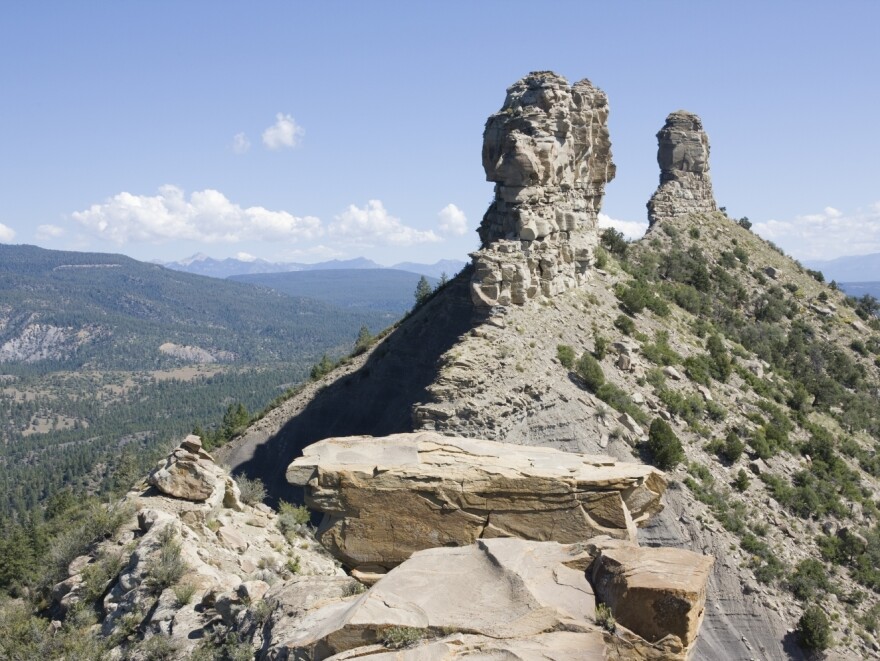President Obama named a new national monument on Friday: Chimney Rock in southwestern Colorado. With two sandstone spires soaring from a mesa, not only is Chimney Rock a spectacular place; it also provides a fascinating glimpse into the ancient people who lived in that region more than 1,000 years ago.
The moon usually rises south of the stone towers at Chimney Rock, but every 18 or 19 years, the moon rises directly between the two huge pillars. This feature seems to have been especially important to a society known as the ancestral Pueblo people. They built their largest building — what archaeologists call their "great house" — to have a perfect view of this astronomical wonder.
Archaeologist Steve Lekson says that this great house is actually still standing at Chimney Rock, and it is a remarkable sight. "The location is just stunning," he says. "And then they architecturally positioned themselves on that ridge out near those two huge pillars to make that thing really impressive."
As a tall, square, 40-room palace with ornate masonry, the great house is the centerpiece of the settlement. The house's design stands apart from the simple, circular houses where farmers and commoners would live.
Chimney Rock is the third national monument President Obama has created, the distinction owing to this feature's rich heritage and natural scenery. As a national monument, the area surrounding Chimney Rock will now see more protection, and also more money.
The monument was one of many outposts of the much larger Chaco Canyon settlement in northern New Mexico, about 55 miles away. An experiment done by a high school student, and the discovery of fireboxes at both sites, led archaeologists to believe that the settlements were able to communicate with smoke signals.
"[The student] had her mom stand at one end, down towards Chaco, and she flashed mirrors at Chimney Rock, or vice versa," Lekson says.
Brenda Todd is one of the experts who has argued that Chimney Rock was a colony of Chaco. Before she started studying Chimney Rock for her Ph.D., she got a taste of its magic. In 2006, she hiked up to the great house at Chimney Rock and watched the lunar standstill. "We saw the moon rise between the pillars that night, and it was pretty amazing," she says.
Visitors to the new national monument won't get to view that astronomical sight for many years. In the meantime, though, there's lots to learn there about the people who lived in the American Southwest.
Copyright 2021 NPR. To see more, visit https://www.npr.org. 9(MDAyMjQ1NzYwMDEyMjU5MjA0MjE0Yzg1Mg004))






